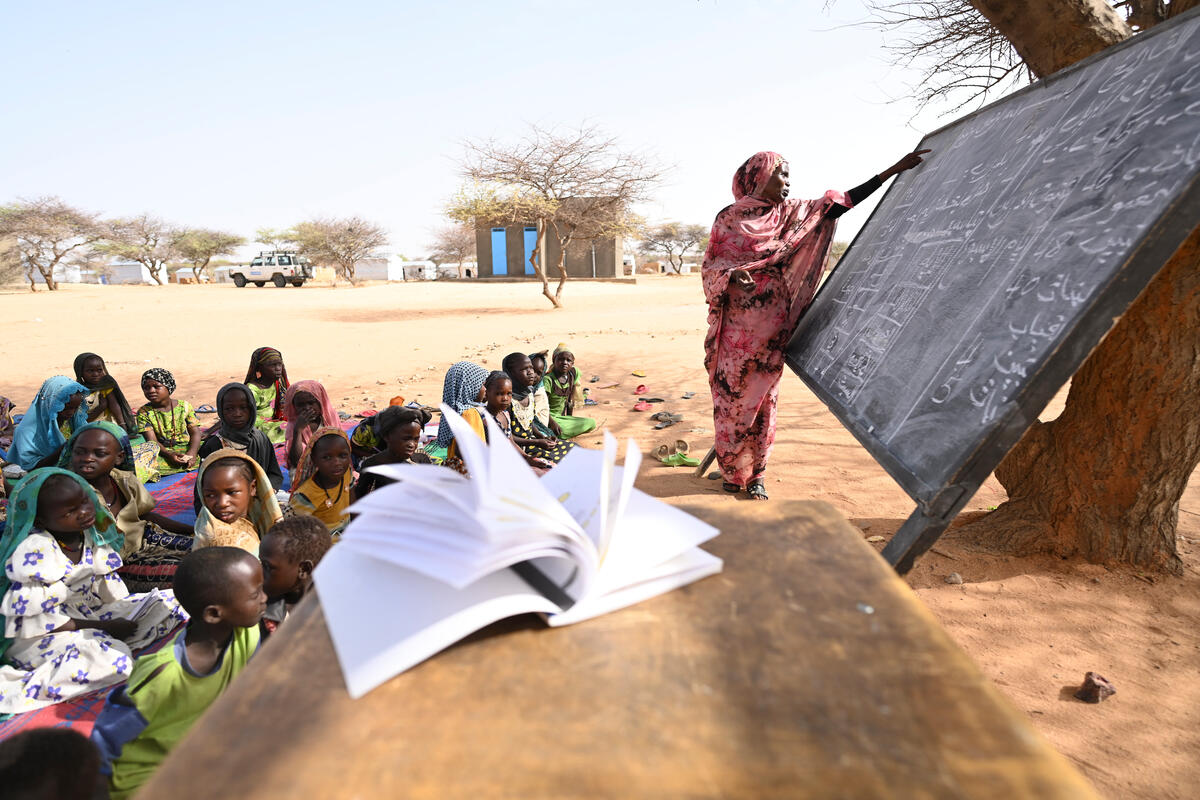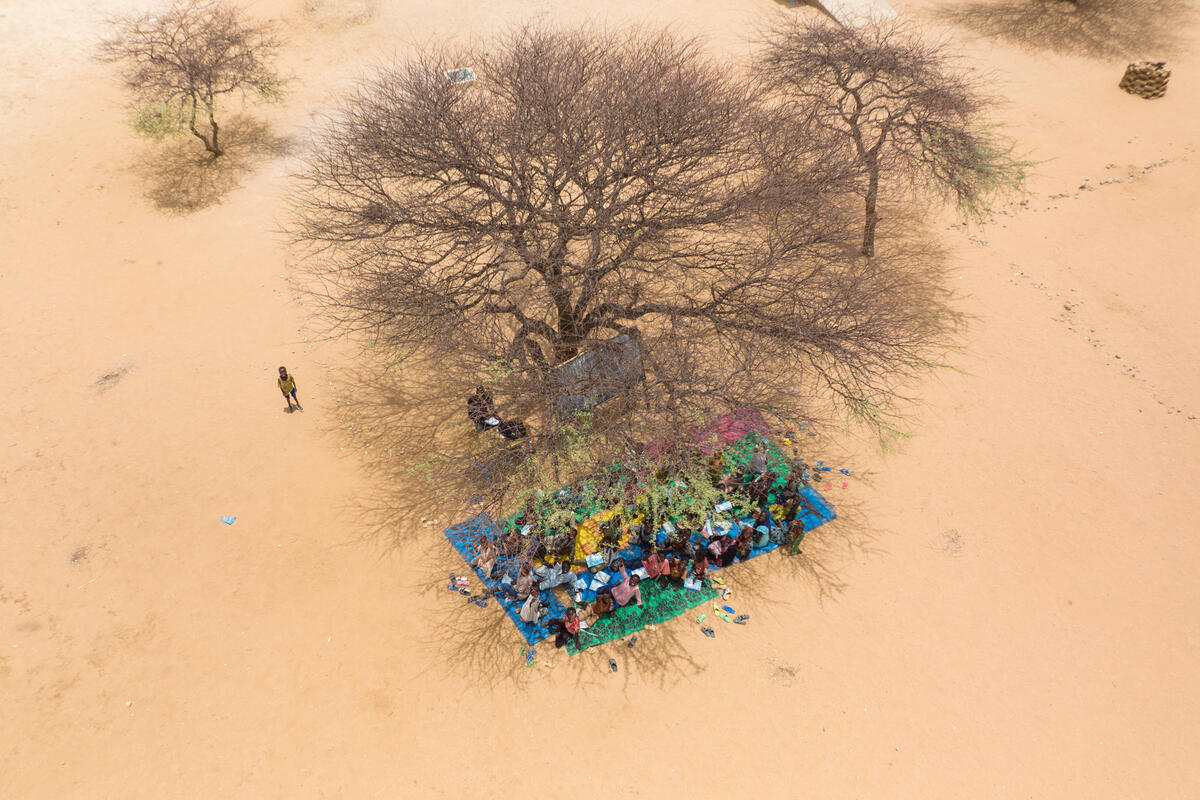Sudanese refugees in Chad face challenges to deliver education
Sudanese refugees in Chad face challenges to deliver education

It’s only 7.30 a.m. in Kouchagine-Moura refugee camp, near Chad’s border with Sudan, yet the thermometer is already approaching 40°C.
Despite the heat, dozens of children assemble, take off their shoes and sit on a large carpet in the scant shade of a leafless acacia tree. In front of a large chalkboard propped against the trunk, a young woman in a flowing pink dress and headscarf greets the children and gestures for them to sit.
Assaniah Ahmad Hussein, 28, is a primary teacher at Alnour School – one of two schools in the camp – leading a class of more than 100 children aged between 5 and 7. Originally from Gnouri in the Darfur region of Sudan, Assaniah arrived in Kouchagine-Moura just over two years ago with her husband and son after fleeing intercommunal violence.
A psychologist by training, she attaches great importance to learning, which she sees as a bulwark against conflict and extremism.
"My journey has been marked by repeated and indiscriminate violence that I believe is the fruit of ignorance,” she says. “I am convinced that access to education and knowledge for children will help break the cycle of violence in Darfur.”
Kouchagine-Moura camp hosts around 14,000 Sudanese refugees who have fled clashes in Darfur since February 2020. In addition to welcoming and protecting the refugees, UNHCR, the UN Refugee Agency, and its partners ensure children's access to education through their inclusion in the Chadian national education system, and by providing infrastructure and materials.
The agency has overseen the construction of two schools accommodating 2,500 pupils, with 24 latrines, two solar-powered boreholes and four staff rooms. Together with the Jesuit Refugee Service, UNHCR trained a staff of 39 teachers drawn from the refugee and host community.
The camp also offers an accelerated education and literacy programme for young people between the ages of 12 and 23, which currently includes 108 refugee girls and 61 boys who have never attended school.
But despite these investments, as the camp continues to grow – with nearly 4,000 new arrivals since the start of the year – staff highlight the stark challenges they still face. The average primary school class size is 163 students, and 10 of the 17 classrooms in the two schools are held in the open air due to a lack of available space.

Over the past few years Chad has become one of the most inclusive countries in the world when it comes to educating refugees. In the 2020-21 academic year, over 100,000 young refugees were in formal schooling – more than ever before.
With renewed conflict across the border in Sudan forcing more people to seek safety in Chad, however, the pressure on an already overstretched system is set to increase. The main factor preventing UNHCR and other UN and NGO partners from scaling up their response is a critical lack of funding, with the US$510 million 2022 Humanitarian Response Plan for Chad only 22 per cent funded. The education component of that plan has received only $2 million of the $34 million needed to address the needs of refugee children.
Beyond the capacity constraints, teachers are also alert to the risks of absenteeism due to the precarious living conditions faced by many families in the camp, as Brahim Tahir Arabi, a Chadian teacher from the host community, points out.
"We need to make sure that children have a healthy and balanced diet," he says. "Some students don't come to school because they don't have proper shoes or clothes.”
For Assaniah, the construction of new classrooms is the top priority. "While trees provide shade, they are not as effective at protecting students during the rainy season," she says.
Nevertheless, her outdoor classroom remains a precious place of learning, with the children paying close attention to their teacher’s words. “This is a place to teach and guide,” says Assaniah. “From youngest to oldest, the children are in harmony, as if they all had the same mother and father. There are no disagreements – we are all refugees.”
This article is being published ahead of UNHCR's 2022 Refugee Education Report, which will be released on 13 September. The report is part of the UN Refugee Agency's involvement in the Transforming Education Summit, which will take place during this year's UN General Assembly.
For more information on UNHCR's education work, please contact:
• Becky Telford, [email protected]










